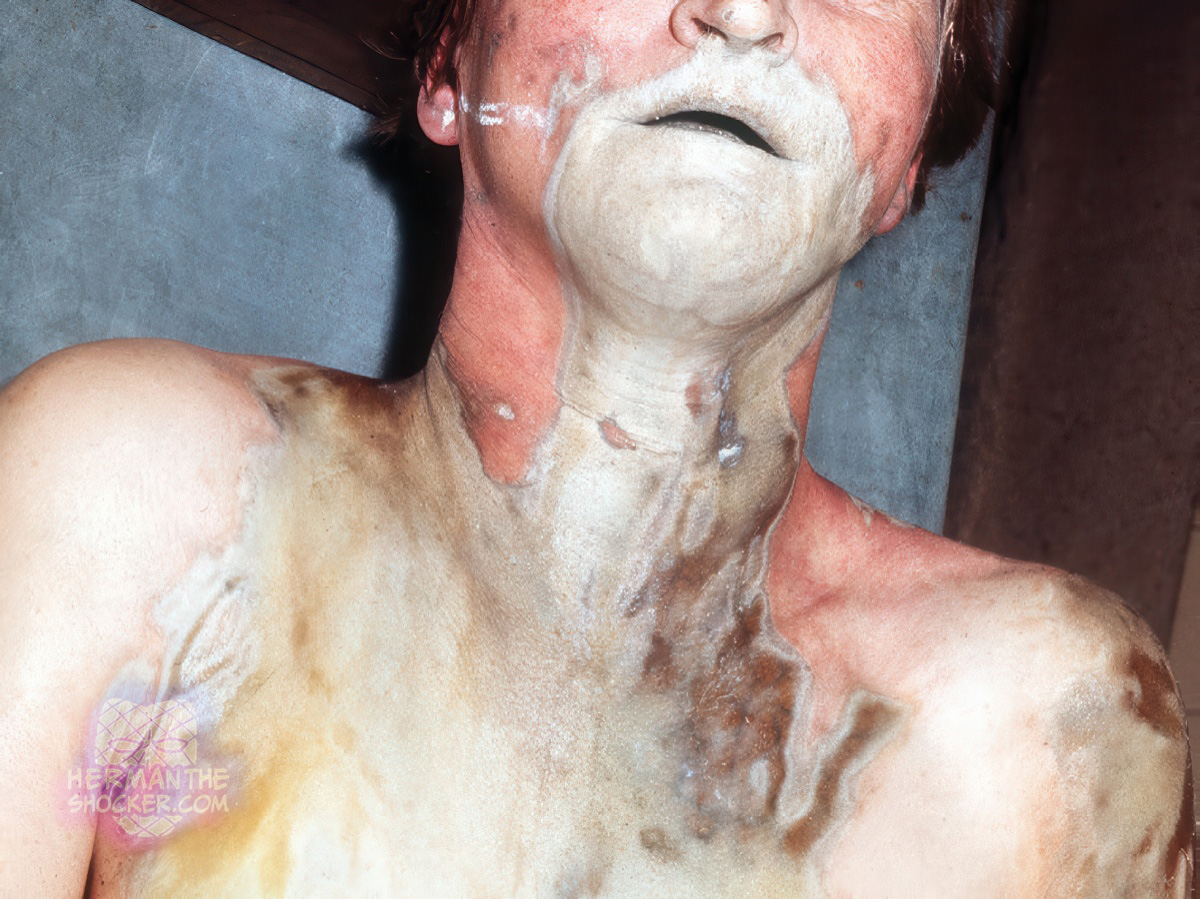Skin burns on a victim of lysol suicide. The trickle pattern makes it obvious that the victim was either standing or sitting erect when drinking the fluid. Lysol is an American brand of cleaning and disinfecting products. The phenolic corrosives, such as carbolic acid and lysol, are occasionally encountered as suicidal agents. Toxicologically, none of these presents much problem, as the damage is often structural rather than poisonous, unless the victim survives long enough to have complications such as renal failure or chest infections. In 1911, poisoning by drinking Lysol was the most common means of suicide in Australia and New York. One of the active ingredients, benzalkonium chloride, is highly toxic to fish, very highly toxic to aquatic invertebrates, moderately toxic to birds, and slightly toxic (“safe”) to mammals.
Phenol and lysol are damaging and affect the tissues in much the same way as acids and alkalis. Carbolic acid (pure phenol) tends to stiffen the tissues and bleach them so that hard, cracked, whitish surfaces are seen on the face and skin. Internally, the same stiffness is noted in the oesophagus and stomach. Lysol is a soapy solution of phenol and cresols. It discolours the tissues a brownish purple, but is otherwise similar to phenol in its action.
Latest posts








